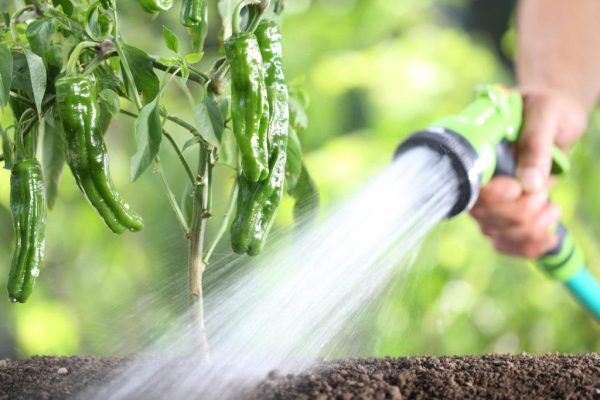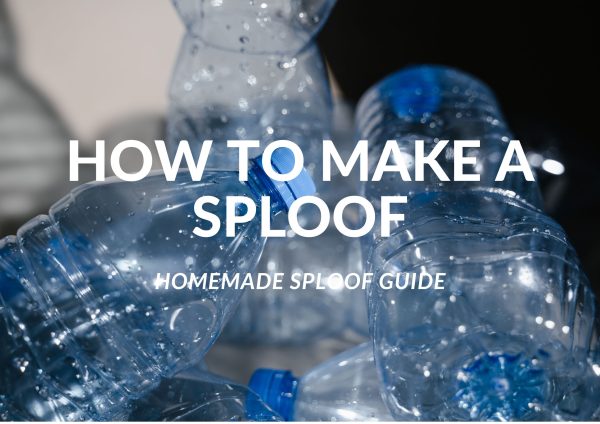Table of Contents
We always want to maximize the yields when harvesting, however, this may not be as easy as we think. Yields are decided by a variety of factors—light, water, and nutrients to name a few. Blooming Nutrients are a tricky thing: Cannabis can still grow buds without any nutrients but conversely, both under and overfeeding can do harm to your plants and even kill them. Therefore, we should take great care when fertilizing our plants, and know when to fertilize them, which nutrients to add, and how often to fertilize blooming weed plants.
What is NPK?
NPK refers to nitrogen (N), phosphorus (P), and potassium (K) respectively. These are the main macronutrients that plants use for growth—plants use these nutrients to build chemical structures and amino acid compounds to create sucrose and other structures that are then used to build new cells and all of the other parts that make up plants on a microscopic level. The number of NPK means the percentage of nitrogen, phosphorus, and potassium (in this order).
For example, NPK 10-20-10 means the fertilizers contain 10% nitrogen, 20% phosphorus, and 10% potassium. Although they are the most common blooming nutrients, which have different effects on plants.

- Nitrogen: Nitrogen is used by plants to produce more chlorophyll, which can help to grow green healthy leaves. Cannabis needs a large amount of nitrogen during the vegetative stage. Nitrogen is active and does not easily accumulate in the soil, so nitrogen needs to be added frequently. A lack of nitrogen will lead to the slow growth of plants. If leaves are small and light in color, not the bright green we usually see and the stems are also fragile and easy to break, you probably have a nitrogen deficiency.
- Phosphorus: Phosphorus can transfer energy to focus on the roots and also stimulates the development of flowers and fruits. Cannabis needs a higher percentage of phosphorus in the flowering stage than in the vegetative stage. When plants are deficient in phosphorus, the roots will be prone to insects, and they will not bloom, or they will grow very small buds.
- Potassium: Potassium has a significant effect on promoting photosynthesis in plants. It can make your plants stronger and enhance their ability to flower and bear fruit. A lack of potassium will cause the leaves to turn brown, curl up, and look burnt over time.
Of course, most fertilizers not only contain nitrogen, phosphorus, and potassium but also other substances, such as potassium salt, lime, ammonium sulfate, phosphoric acid, calcium, magnesium, iron, copper, etc. These are all to balance the lack of naturally occurring nutrients in potting soil (or natural soil).
How long does flowering last?
The duration of the flowering stage can vary depending on the plant species and variety, but typically it lasts between 6-12 weeks for most flowering plants grown indoors under grow lights. Here are some more specific details:
Cannabis
- Most cannabis strains flower for 7-10 weeks before being ready to harvest. Some sativa strains may take up to 12 weeks.
Tomatoes
- Tomato plants transition to the flowering stage when they perceive 12 hours of darkness each day. The flowering/fruiting stage then lasts 6-8 weeks.
Peppers
- Like tomatoes, peppers flower after experiencing 12+ hours of uninterrupted darkness. The flowering period is around 6-10 weeks.
Strawberries
- Strawberries take about 4-6 weeks from the emergence of flower buds to producing ripe berries.
Leafy Greens (lettuce, kale, etc.)
- Leafy greens have a shorter flowering window of just 2-4 weeks before going to seed.
The flowering time can be influenced by factors like light intensity, nutrients, temperature, and plant genetics. Growers monitor trichome development and other ripening signs to determine the ideal harvest window. With photoperiod plants, the flowering stage concludes once the mature fruits/flowers are produced.
How often should I fertilize in the flowering stage?
The nutrient requirements will change dramatically when the plants enter the flowering stage, and this may be a little hard for new growers. You can feed your plants 1-2 times every week, gradually increasing the nutrients, but at the same time pay attention to your plants’ reactions after each feeding.
It does matter how you fertilize (the amounts and percentage of nutrients) as much as how often you fertilize. We will summarize some recommended NPK percentages for the flowering stage. Plants go through several sub-growth periods during this stage, and you can make some changes based on the states of your plants.
Week 1 Flowering
In the first week of flowering, cannabis plants transition from the vegetative growth stage. An NPK ratio around 5-10-7 is ideal. Plants will undergo a stretch period, rapidly increasing in height and developing pre-flower sites. Higher phosphorus supports branching and healthy root growth during this early stage. Lower nitrogen prevents excessive vegetation. Closely monitor plants when adjusting nutrients to prevent burning tender flowering sites.
Week 2 Flowering
By the second flowering week, you can distinguish male from female plants if growing from regular seeds. Separate males to prevent pollination. Females show distinguishing calyxes – futurebudsites. Plants continue the stretch period, focusing energy on developing the structures to support heavy, dense buds. Maintain the 5-10-7 NPK ratio with adequate phosphorus.
Week 3 Flowering
In week 3, the stretch finishes as plants divert all energy to flowering sites. The NPK ratio shifts to 6-15-10 to provide more phosphorus for energy transfer to bud production. A layer of trichomes begins developing on leaves and flowers emit their distinctive aroma. Invest in carbon filters to control odor. Boost nutrient levels to meet heightened plant demands.
Week 4 Flowering
Plants show vigorous budding with dense nugget formation during the 4th flowering week. The 6-15-10 NPK continues meeting increased phosphorus needs. Trichome production accelerates leaving a white, crystally coating. The aroma peaks in intensity so control odors with airflow and filters. Provide nutrients, humidity and air circulation for optimal bud development.
Week 5-6 Flowering
Buds swell in size through weeks 5 and 6 while developing thicker trichome coverage. The preferred NPK is now 5-12-9 with reduced phosphorus demand but added calcium for continued growth. The intense aroma requires odor control measures. Trichomes turn opaque and cloudy white as plants approach ripeness. Monitor closely for deficiencies indicated by discoloration, spots or damage.
Week 7-8+ Flowering
In the final 2-4 weeks, trichomes turn amber as buds fully ripen. Gradually reduce the NPK to around 4-10-7, lowering phosphorus, potassium and calcium demands. Flush with pH’d water the last 7-10 days to remove residual nutrients. Harvest when 20-30% of trichomes turn milky amber. Nutrient issues or deficiencies can still arise, so stay attentive until harvest.
How often to fertilize blooming weed plants
During the flowering/blooming stage, it’s generally recommended to fertilize cannabis plants every 7-14 days.
Specifically:
- Early Flowering (weeks 1-3): Fertilize every 7-10 days to provide ample phosphorus and potassium for bud formation.
- Mid Flowering (weeks 4-6): Fertilize every 10-14 days. Buds are really packing on weight now and need nutrients.
- Late Flowering (weeks 7+): Fertilize every 10-14 days, tapering off fertilizing about 2 weeks before planned harvest to allow plants to use up remaining nutrients.
It’s important not to over-fertilize in the bloom stage, as this can lead to nutrient burn and limit bud development. Always start with half or less of the recommended fertilizer amount and work your way up if needed.
The best way to determine if you need to fertilize is to keep an eye on your plants. Signs they need nutrients include:
- You’ll also want to make sure you are using a high phosphorus and potassium fertilizer formulated for the flowering stage when fertilizing blooming weed plants.
Your Best Fertilizer for marijuana

VIVOSUN Nutrients Base A and Base B is a two-part base nutrient system that provides essential macro and micronutrients. Base A and Base B consist of Nitrogen, Phosphorus, Potassium, Calcium, and Magnesium, which eliminate the risk of plants being deficient in any specific nutrient.
- The Perfect Combination: VIVOSUN Nutrients Base A and Base B are two-part, concentrated, holistic formulas that provide essential macro and micronutrients for plant growth. They can be used from the vegetative stage through the end of flowering.
- Rich Nutrient Elements: This bundle is composed of Nitrogen, Phosphorus, Potassium, Calcium, and Magnesium, which help support rapid plant growth at all growth stages and help eliminate the risk of plant deficiencies in certain nutrients.
- Increase Your Yield: The VIVOSUN Nutrient Base Kit is 100% water-soluble, stabilizes the pH of the nutrient solution, can improve nutrient condition, enhances nutrient absorption by plants, and improves the yield and quality of plants. For best results, use every time you water.
- Great Compatibility: The product is compatible with all growing media and is suitable for soil, hydroponics, aquaponics, and coco coir cultures. This bundle provides the complete nutrient base for fast-growing flowers, ornamental plants, vegetables, flowers, herbs, and more.
- Easy to Use: From the start to the finish of your growing cycle, you’ll only need two bottles; no complicated nutrient planning is required. The same amount of Base A and Base B should be used for each watering. NOTE: Base A and B should not be mixed in concentrated form. A and B should always be diluted in water separately.
Pot plants in the flowering stage
| Description | |
| Transitioning to Flowering |
|
| Flower Development |
|
| Trichome Production |
|
| Pistil and Calyx Formation |
|
| Resin Production |
|
| Bud Growth and Maturation |
|
When to stop using nitrogen during flowering
| Stages | Description |
| Early Flowering Stage |
|
| Mid to Late Flowering Stage |
|
| Late Flowering Stage |
|
Subscribe to the VIVOSUN newsletter for growing tips, grower stories, and special offers, and get 12% off your first order!
We love the new VIVOSUN Smart Grow System and we are certain that you too will love it once you try it.
And join our Facebook farmer’s community for even more exclusive contests and prizes!
Download VIVOSUN App to get 15% off and explore more information!






